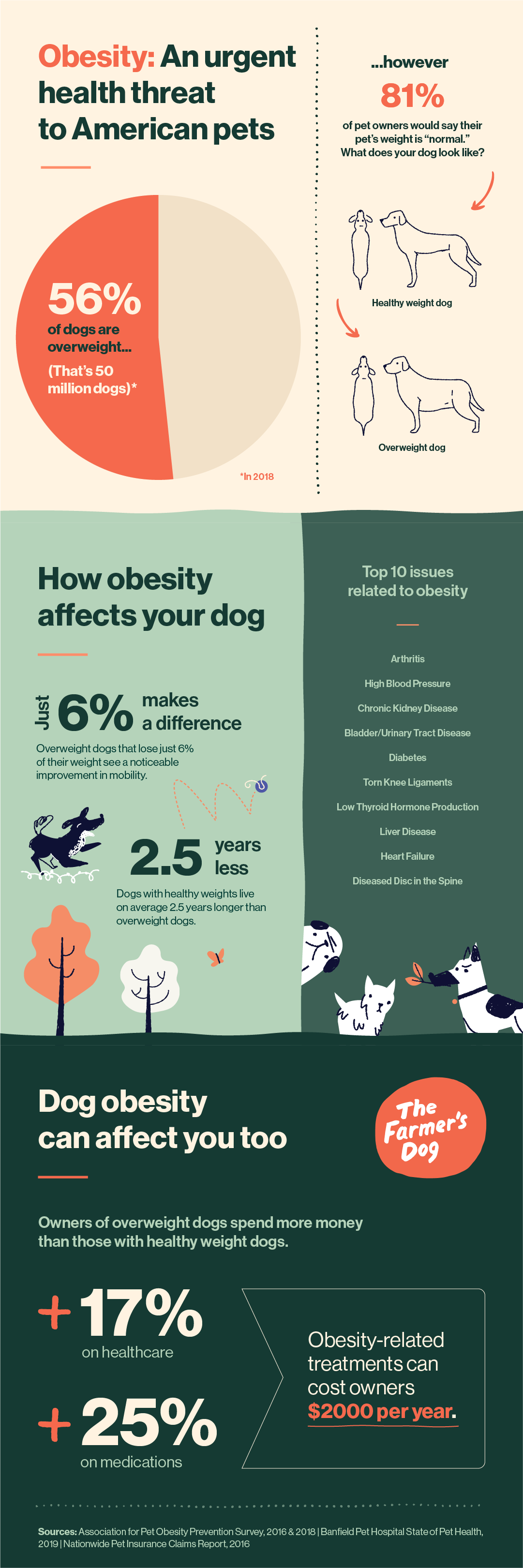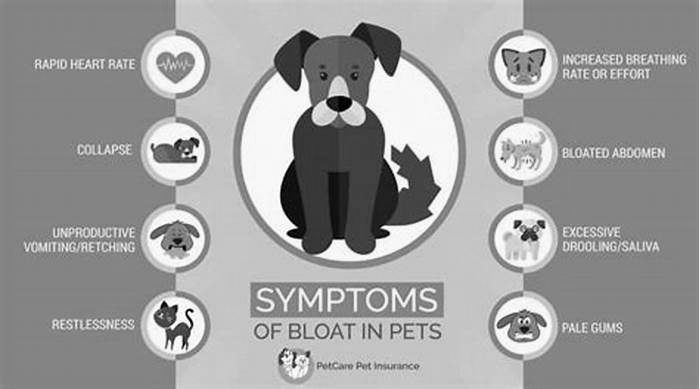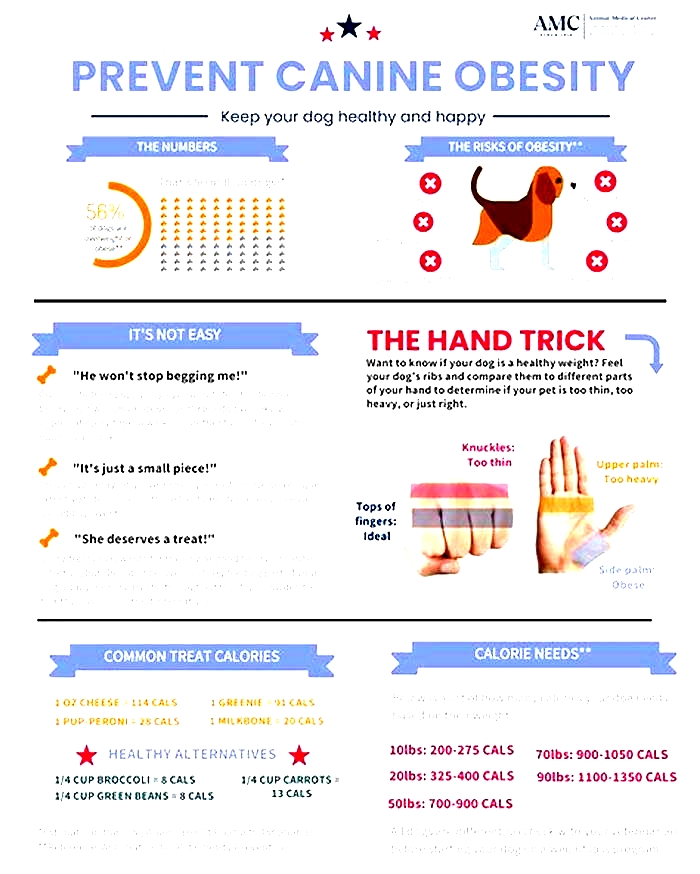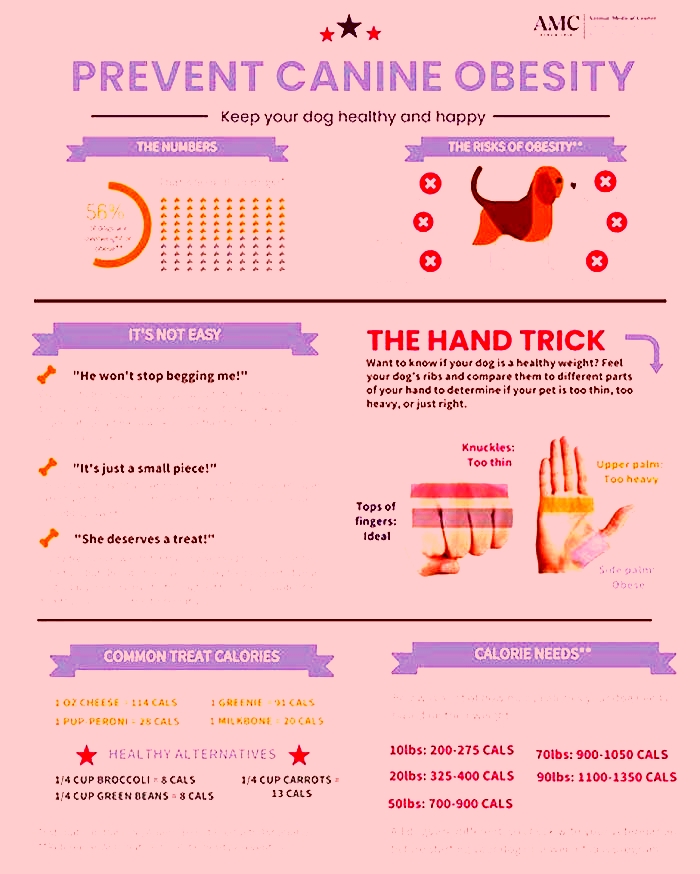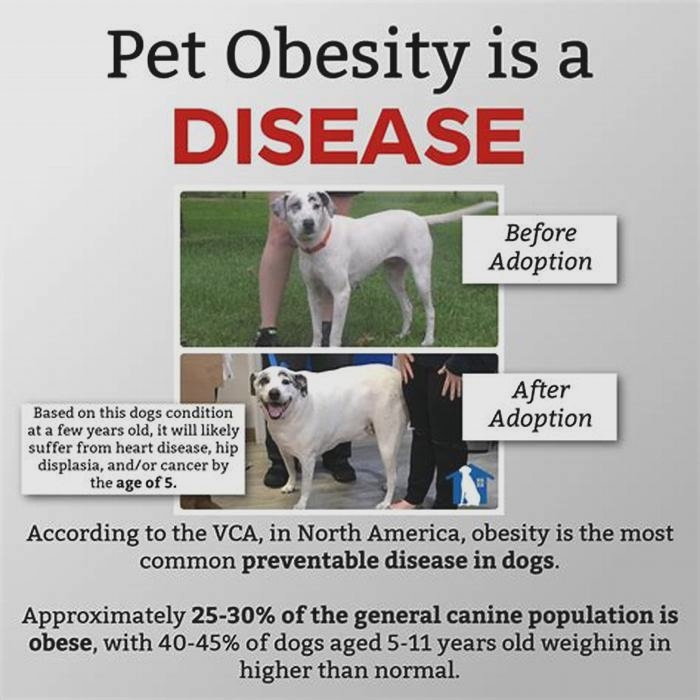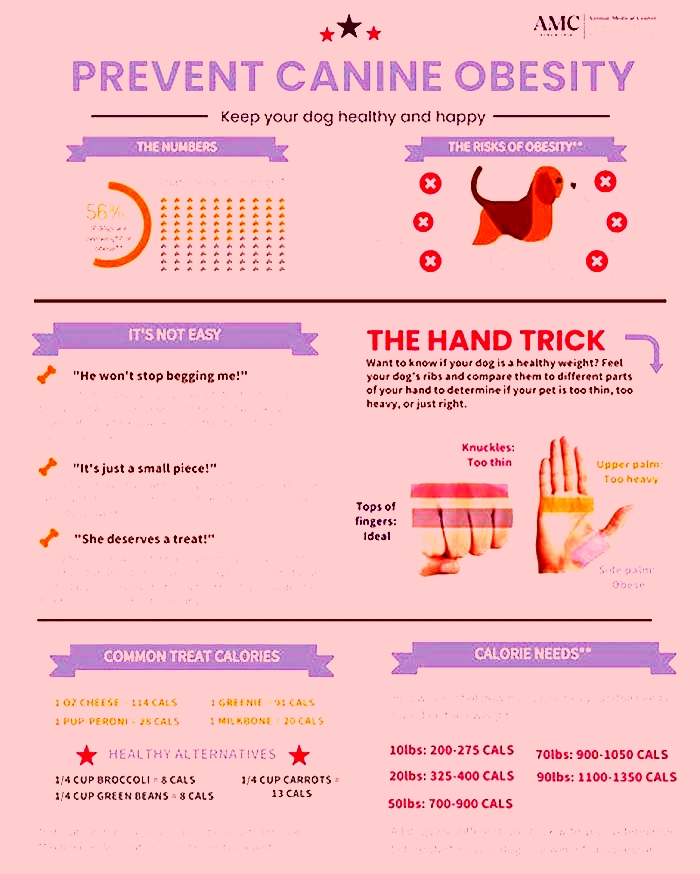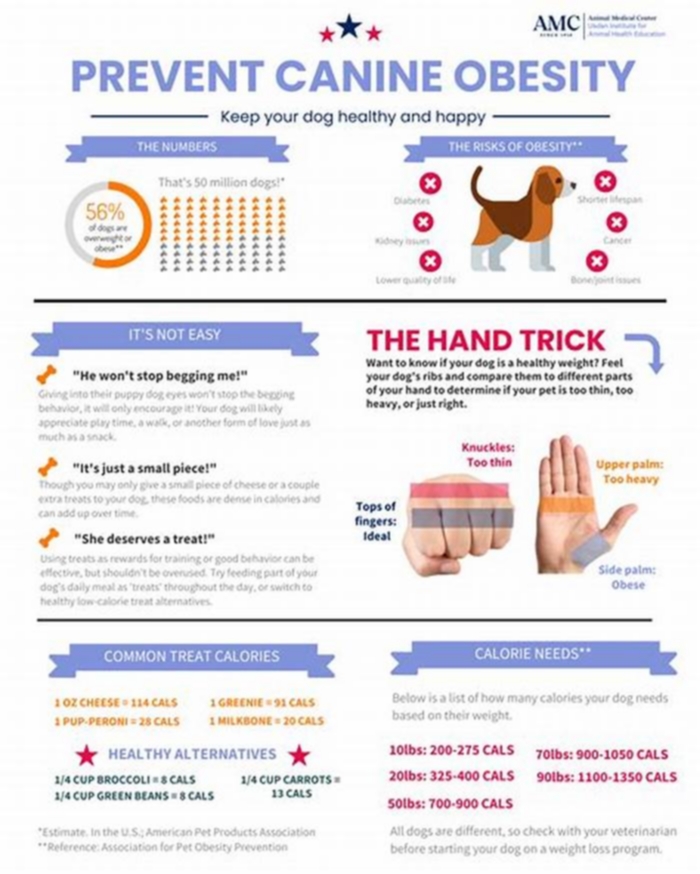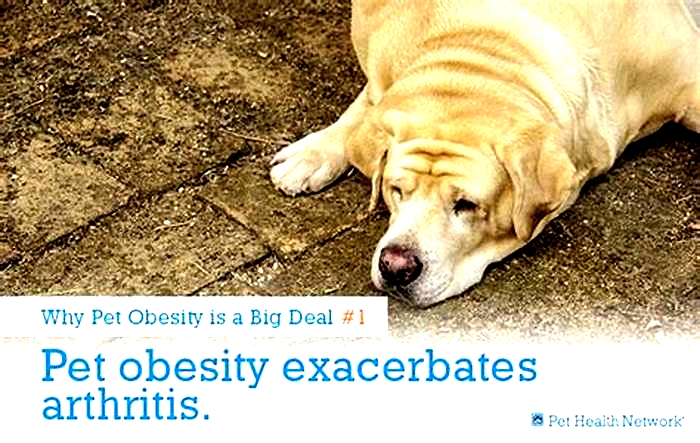What are the signs of obesity in dogs
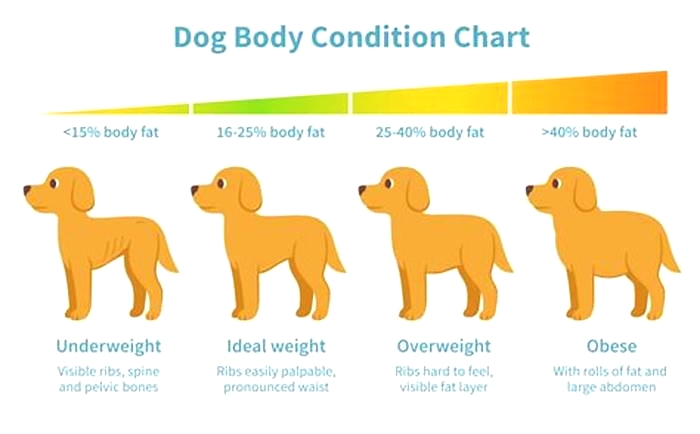
Obesity in Dogs
What is Obesity in Dogs?
Obesity can be defined as an excess accumulation of body fat that contributes to disease. Dogs that weigh at least 10% above their ideal body weight are considered overweight, while dogs weighing 20% more than ideal are considered obese. Excess body weight can be a contributing factor in many diseases.
What are the risks associated with obesity in dogs?
Up to 65% of dogs in the United States are considered overweight or obese. Obesity can contribute to many conditions in dogs, including:
Arthritis
Pancreatitis
Kidney disease
Respiratory compromise
Decreased exercise and heat tolerance
Increased risk of cardiovascular disease
Abnormal response to insulin
Increased anesthetic risk
Decreased quality of life
Showing love by showering your dog with treats may actually result in a shortened lifespan and decreased quality of life if the excess calories result in obesity.
Symptoms of Obesity in Dogs
Signs of obesity include:
Weight gain
Less energy than usual
Decreased exercise tolerance
A collar or harness that seems tighter than it used to be
Being unable to feel the ribs, or seeing a waistline (a small tuck in the belly right in front of the hind legs)
Causes of Obesity in Dogs
The most obvious cause of obesity in dogs is overfeeding, which can include the dogs regular wet or dry food, treats designed for dogs, and table scraps or human foods. Inadequate exercise can also lead to your dog becoming overweight. There are some medical conditions that cause obesity, including hypothyroidism and hyperadrenocorticism, also known as Cushings disease.
In addition, certain dog breeds can be predisposed to obesity, including:
Is My Dog Overweight?
If you suspect your dog may be overweight, schedule a weight check and examination with your veterinarian. If there seems to be excess padding over your dogs ribs or you are unable to see a slight tuck-up just in front of the hind legs, chances are good that your dog is carrying excess weight.
How Veterinarians Diagnose Obesity in Dogs
Your veterinarian can obtain your dogs weight and look for trends over time indicating weight gain or loss. A measurement called body condition scoring can also be done.
The two most commonly used body condition scores are a five-point scale (where three is considered ideal) and a nine-point scale (where four to five is considered ideal). Your dog should have an hourglass shape when viewed from above if he is at his ideal body weight.
Your veterinarian may also run some lab work to check for any underlying conditions that may be contributing to weight gain, such as hypothyroidism or Cushings disease. If the weight gain has been very sudden, your veterinarian may also recommend x-rays to check for fluid or masses in the abdomen.
Treatment of Obesity in Dogs
The basic components for treating obesity are exercise and dietary changes. Depending on the severity of obesity and current fitness level, increasing the amount of your dogs daily exercise may need to be done gradually. In general, most dogs can safely exercise for 15-30 minutes per day to start. The duration and intensity can be slowly increased as your dog loses weight and becomes more fit. A simple walk is feasible for most families, but exercise can also include playing fetch indoors or outdoors, swimming, and running. If your dog is older, you may need to do shorter exercise sessions.
Dietary changes should be made with the guidance of your dogs veterinary team. The reduction or elimination of extras like treats and table scraps will be helpful, and a change in type and/or amount of food is often needed. There are many weight loss diets available, and some require a prescription from your veterinarian.
A good goal is weight loss of 1-2% of body weight per week, ideally reducing body fat stores while maintaining lean body tissue. While most dog foods give feeding amount recommendations, these are only guidelines, and individual dogs may need more or less than recommended to maintain ideal body condition. Meal feeding (instead of free choice) is often helpful in controlling caloric intake. It is also important to use a measuring cup to ensure consistent feeding of the appropriate amount of food.
Instead of eliminating treats completely, you may opt to switch to baby carrots, frozen green beans, pumpkin, or lower-calorie dog treats if your veterinarian agrees that these are good options for your dog.
Medications are not typically needed to treat obesity unless your dog has hypothyroidism or Cushings disease, in which case regular exams and lab tests will help determine the appropriate type and dose of medication.
Recovery and Management of Obesity in Dogs
Once your dog has reached his ideal weight, your veterinarian may recommend transitioning to a maintenance diet. It is important to continue regular exercise and limit extra treats and snacks.
Of course, preventing obesity before it even happens would be ideal. This can be achieved by two or three meals per day instead of always having food available, avoiding excessive treats, and ensuring that your dog gets regular exercise. Exercise is not just good for your dogits good for humans and offers physical and emotional benefits for all involved.
While it takes effort to prevent or correct obesity, the benefits of a longer and healthier life are well worth it for you and your dog
References
- Tilley L, Smith F, Sleeper M, Brainard B. Blackwells Five-Minute Veterinary Consult: Canine and Feline. Wiley-Blackwell. Seventh edition; 2021
Featured Image: iStock.com/vadimmmus
- Tilley L, Smith F, Sleeper M, Brainard B. Blackwells Five-Minute Veterinary Consult: Canine and Feline. Wiley-Blackwell. Seventh edition; 2021
Featured Image: iStock.com/vadimmmus
WRITTEN BY
Jennifer Grota, DVMVeterinarian
Dr. Grota decided at an early age that she wanted to be a veterinarian. A native of Indiana, she grew up in a home where animals were...
Obesity in Dogs: A Major Health Threat Hiding in Plain Sight
This Is a Paid Advertisement for The Farmers Dog
Theres a weight problem in America and it isnt just affecting humans.
The most recent statistics classify the majority of dogs in the U.S.56%as overweight or obese. While that makes obesity a major health crisis for dogs, its a problem thats often overlooked, as many pet owners may not even realize their pets are overweight.
I see people coming in constantly with 90-pound Labs and they say, she looks great, says Dr. Ernie Ward, DVM, CVFT, and founder of theAssociation for Pet Obesity Prevention(APOP). Well, actually, that dog is 15 pounds overweight. But weve normalized it. This kind of dog embodies what APOP has called the fat pet gapthe misalignment between what we think a dog should look like and what a healthy body composition should really be.
Obesity in dogs comes with significant consequences. In fact, Ward and other vets call it our pets biggest health threat. And its not an isolated issue; obesity is linked to a whole raft of health problems including arthritis, chronic kidney disease, bladder/urinary tract disease, liver disease, low thyroid hormone production, diabetes, heart failure, high blood pressure, and cancer. We think its very important that people understand this isnt just a cosmetic issue, says Dr. Ward. There is a physiological consequence to this.
A slimmer margin of error
While obesity is loosely defined as 30% above ideal body weight (there is no universally accepted definition forpets), veterinary experts say just being overweight impacts pet health. And thats one of the challenges in addressing this issuemany pet owners may simply not realize thereisan issue.
You look at your dog and it seems healthy and its active and doesnt have any apparent health issues, says Ward. So you say, its normal, and by extension its morphology, or its size, is normal. But the problem is that we often dont know what what normal is when it comes to dogs, so we project our own human-centric perspective. In human terms, we think we just need to drop five pounds, says Ward. Well, the amount of physiological impact of a few pounds is much, much greater and more concentrated in pets than in people. Five pounds on a cat is catastrophic. Five pounds on a Lab is significant. We think a few pounds off my Lab; what could the consequence of that be..? But the consequences are that Labs hips are deteriorating, its causing damage to the kidneys, its probably causing high blood pressure which is causing a constellation of problems, and its increasing cancer risk.

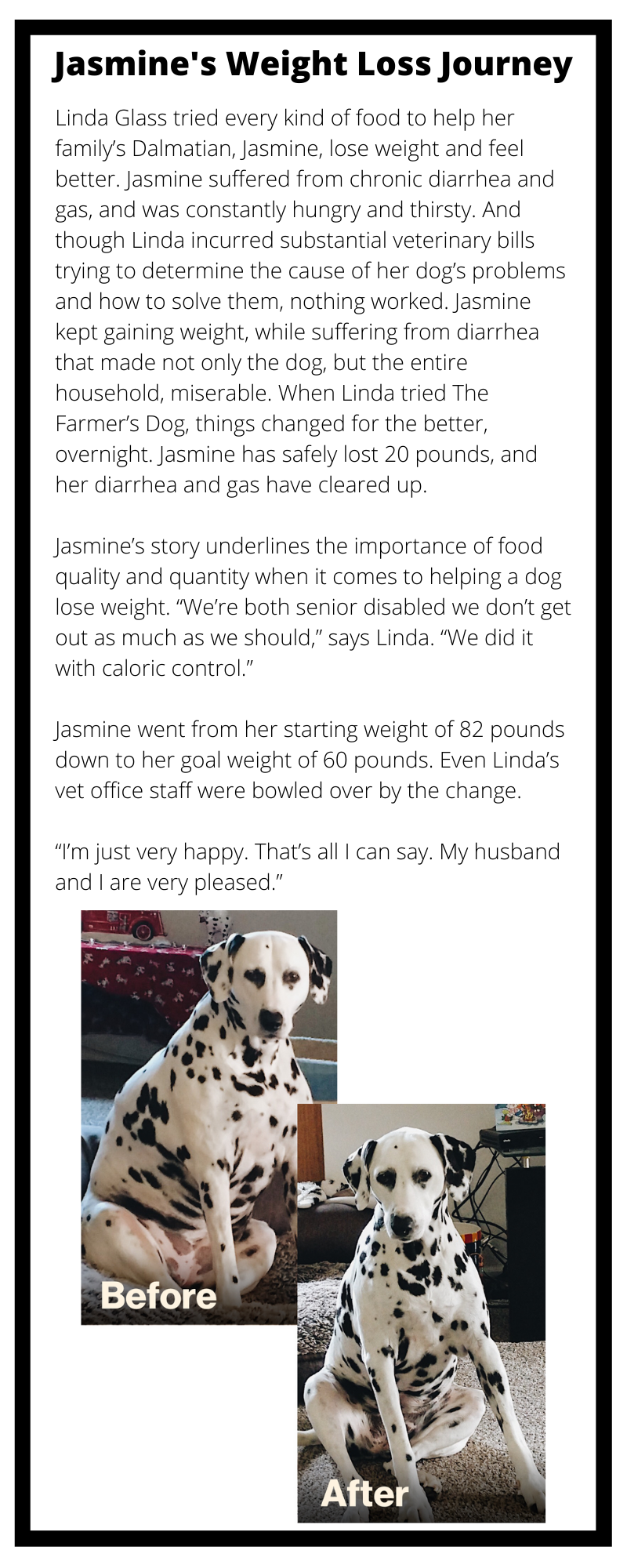
Dr. Carol Osborne, an integrative veterinarian at Chagrin Falls Pet Clinic in Ohio, echoes the fact that a dog doesnt have to be clinically obese to experience health consequences. Being just 10% overweight decreases a dogs lifespan by one-third and predisposes him to heart, kidney and liver disease as well as diabetes, arthritis,and cancer, she says.
Osborne says that adipose tissue (aka fat) is filled with blood vessels, and the added rich blood creates inflammation. This all creates an environment attractive to cancer cells and increases a dogs risk of developing the disease, she says.
Cancer is the number one killer of dogs today, says Osborne.
And, for some smaller breeds, extra pounds make a huge difference. Three extra pounds for canines in the toy category is the equivalent of gaining approximately 30 pounds for you or me, she says.
Holistic veterinarian and researcher Dr. Jean Dodds, of Hemopet veterinary center in California, says the health effects of having even a marginally overweight dog include reduced energy with resultant less exercise, easy keeper (gains weight on small amounts of food), skin and hair coat conditions, and irregular female reproductive cycles, if intact.
Conversely, obese dogs may benefit from even just slight weight loss. According to aclinical trial published in 2010,obese dogs with osteoarthritis showed a significant decrease in lameness from weight loss starting at 6.10%.
Another study,published in the Journal of Veterinary Internal Medicine in 2018 found that being overweight was associated with a shorter lifespan in the 12 dog breeds studied. The estimated reduction in lifespan for the overweight group was up to two-and-a-half years.
We look at a dog with obesity and if a dog loses as little as 6% body weightthats six pounds on a 100-pound Retrieverit makes a difference, says Ward. It doesnt take a lot of weight loss to make the pet feel better. I really try to emphasize that when Im talking to (pet owners) because its a quality of life issue as much as a longevity and disease-prevention issue.
Osborne says shes seen this quality of life improvement from weight loss time and again. One of her clients came in with a two-year-old male Pomeranian named Smokey that weighed in at 45 pounds. When he first visited, the dog already had one cranial cruciate ligament (CCL) surgery on a hind leg and was about to have a second. Osborne changed his dietwhich involved stopping the dry kibble and replacing it with chicken and fresh vegetables.
At this point he is down to 22 pounds, she says. He acts, feels and looks like a puppy instead of sleeping under the kitchen table most of the day and barely moving at all. Hes running around the house, ready to play and having a ball. And he wont need another surgery after all.
Rewriting your dogs future
For pet owners with dogs who are not obese and who arent showing obvious health symptoms, the concern may not seem as pressing. But Ward warns against not taking action when you can.
I see too often a 10-year-old Lab mix and suddenly they cant get into the car because of crippling hip arthritis caused by obesity, he says. But if you can rewind the tape, you dont have the years of cumulative damage. (Obesity) is a slow and insidious and silent killer, and people may know its happening, but they dont take action until theres a crisis. I say that nobody treats obesity until theres a catastrophe. And when its catastrophic, you may not recover.
A guide for dog owners: How to assess your dogs weight
The question remains: How can pet owners determine the ideal weight for their dogs?
The rib testOsborne says it begins with keeping regular track of your dogs body condition. She recommended the rib test.
Stand behind your dog, gently run your hands along either side of the rib cage, she says. You should be able to easily feel, but not see each rib, and your dog should have a waist or a tucked up area in front of the hind legs. If you can pinch more than an inch and/or your dog has lost his waist, its probably time to think about reducing.
The standing testWard opts for another method. I recommend you do the standing test. Look at the dog from the sidelean down and look from the sideand see [if] their abdomen or stomach is sagging, he says. Then I look from the top: From standing I should see an hourglass indentation in front of the hips. You should see the chest extend out and the waist tapers in making an hourglass.
While dogs vary widely in body shape and volume of hair and fur, Ward says this test should work for 95% of dogs (he notes that exceptions include English Bulldogs and Pugs).
Food matters most
Many vets agree that weight loss begins and ends at the food bowl for dogs and cats. Based on available literature and experience, Ward breaks down the weight-loss math this way: 60-70% diet and 30-40% exercise.
So, knowing exactly how much to feed your dog becomes key. Like many experts, Ward cautions against using the guidelines on most commercial dry dog food packages to determine how much youre feeding. The parameters, which are based on adult dogs for all life stages, are far too broad to accommodate every dogs needs. For example, Ward says, spaying or neutering a dog reduces their energy requirement by 20-30%. So already, if youre feeding according to guidelines youre overfeeding a pet who is spayed or neutered, he says. I see so many pet owners say Im feeding exactly what they say on the bag, and its like no, thats too much.
Its a good idea to work with your vet to assess your dogs body condition, muscle condition, lifestyle and any concurrent medical conditions and determine how many calories you should be feeding.
You can also consult the tools available online(including on APOPs site)which provide a good estimate of weight ranges and caloric needs by breed and size.
As to food quality, Osborne recommends fresh food including lean protein like chicken, turkey, fish, eggs and tofu, and fiber through fresh vegetables such as Brussels sprouts, broccoli, cauliflower, kale, cabbage and spinach.
While some dog owners hesitate around the idea of feeding people food, this kind of real, fresh food is more nutrient-dense, and more bioavailable than dried, processed food. Those planning to prepare fresh food at home for any length of time should be sure to consult their vet to ensure meals are correctly balanced and contain the necessary vitamins and nutrients.Subscribing to a fresh-food plan makes it easier, and safer, to feed nutritionally balanced meals.
While food is the biggest factor, pet owners should also plan to exercise dogs for a minimum of 20 minutes, twice a day. And be careful with snacks. You can use fresh veggies as healthy treats and avoid processed mystery-ingredient treats and things like pig ears, and bully sticks.
If you dont eat it, neither should your dog, Osborne says.

